MPower digital switching, the strengths of Maretron and Carling align
The Maretron MPower 12 Channel DC Load Module that’s slowly rolling out this year may look like just another darn black box, but it’s a watershed product in my estimation. If you’re a technical dealer, a custom builder, or a savvy DIY boat owner already familiar with Maretron’s vast monitoring ecosystem, you’ll get impressive yet inexpensive distributed power and digital switching capabilities that integrate well with a system you may already service or own.
Moreover, MPower also marks the company’s consolidation with much larger Carling Technologies, which intends to grow what is now the Maretron brand with additional resources, significant efficiencies of scale, and also their longtime boatbuilder relationships. In fact, MPower is already fitted in some new boats not normally Maretron equipped, as I’ll detail below. But first I’ll discuss the MPower components, which I too have experienced hands-on prior to the official product launch in September.
MPower Components
Yes, MPower is a lot like the Carling Octoplex OctoLite that Ben Stein enthused about after the 2018 Miami show, and — since Carling then owned Maretron at arm’s length — he also looked forward to an OctoLite version integrated with Maretron sensors, displays and software tools. So while that has happened — and tested well for me even with beta configuration software — the story expanded when Maretron manufacturing, product development, marketing, and management were integrated with Carling’s worldwide operations.
As shown above, the initial MPower CLMD12 DC load module — which will list at $390, with more versions coming — has 12 digitally switchable solid-state breakers that can be optionally backed up with the CBMD12 Bypass Module ($125). The initial MPower family will also include the 6 rocker switch VMM panel ($160 MSRP) and the 12 button CLM keypad ($180), which can each control the breakers from anywhere on a common NMEA 2000 network (though there are many other ways to switch lights and other loads, as you’ll see in the software section).
When Ben S wrote about these modules, there was no information yet online. But the OctoLite system is well documented now, and checking out the various datasheets and photos is an excellent way to preview the MPower details that will come out in September. The backlighting and function LEDs on the keypad, for instance, can be set up in all sorts of ways.
Note too how the CMK pad uses the standard NMEA 2000 “Binary Switch Bank Status” message, which is not true of some other N2K switching components — including Maretron’s, I’m pretty sure — because they were developed before NMEA published the 13 power PGNs and haven’t been updated yet. That’s good news in terms of MPower interoperability with another brand’s N2K power products that use the standard messages.
But even better than the OctoLite documentation was getting hands-on with actual MPower components.
Carling Technologies calls this a Maretron MPower DC Demo Kit and I suspect that they are in the R&D labs of major boatbuilders and marine electronics manufacturer around the world. But the devices are not prototypes. Carling not only sells the modules to OEM customers as OctoLite (which will become Maretron MPower as the brands become siblings), but has long offered very similar components to the on/off highway equipment industry. So the underlying technology has already been seriously field tested, and the parts do have a pleasingly industrial feel. When you muscle one of those Deutsch connectors into its CLM socket, for instance, you feel why it meets IP67 and many other water, dust, temp, vibration, and electrical environmental standards.
Interestingly, the Bypass Module does not seem available for uses like giant dump trucks, though I know many boaters worry about what they’ll do if their digital switching or silicon circuit breakers fail. I like the MPower solution, but let’s discuss.
First, please ignore my sloppy bench testing. The CBMD12 Bypass could be neatly fastened to a bulkhead alongside the load manager and if that short red DC+ jumper was in place, a boat operator only needs to move that single Deutsch connector to give all twelve circuits manual switching with blade fuse protection.
To some this design seems more complicated than the CZone technique of including blade fuses right in the load management module that you can reposition to override the corresponding digital switch, and it certainly takes up more room. But I like how the Deutsch plug change gave me real switches for all 12 circuits in one move and no fiddling with blade fuses while whatever problem is fixed.
Moreover, if your boat has multiple MPower load managers, it might be reasonable to carry only one bypass module (though there would be the extra step of connecting the DC+ jumper cable). And the bypass may never be needed anyway as I think that quality products from companies like Carling, Maretron, and CZone have already established the reliability of solid-state DC circuit protection and digital switching on boats.
MPower software
MPower switching can be run under Maretron’s powerful N2KView monitoring and control software, but don’t let that put you off. If PC control of your systems — even a dedicated Maretron TSM810C or an MBB300C and MFD — don’t fit your taste, budget or boat, there are interesting alternatives. I’ll let the CLM12 manual do the talking, with boldfacing added:
Each breaker in the CLMD12 may be manually switched on or off using any of the following methods:
1) Maretron N2KView software running on a personal computer, or
2) Maretron N2KView software running on a Maretron MBB-Series Black Box for Vessel Monitoring and Control {displayed via Garmin OneHelm and other MFD integrations in the works}, or
3) Maretron N2KView software running on a Maretron TSM-Series Vessel Monitoring and Control Touchscreen Computer, or
4) Maretron N2KView Mobile app running on an Android or iOS tablet or phone, or
5) a Maretron DSM-Series NMEA 2000 Multi-function Color Graphic Display, or
6) any NMEA 2000-connected switch, such as an Maretron MPower CKM-Series network-connected keypad or VMM-Series network-connected switches, or
7) any NMEA 2000 product that can transmit standard NMEA 2000 control messages (please refer to Appendix A for details).
So there are many relatively inexpensive ways that small and medium size boats can use this technology, and it’s even appropriate for improving a middle-aged, mid-size vessel like Gizmo, which is what I intend to do in phase two of this testing.
But while using MPower can be as simple as toggling familiar physical switches, configuring it is a different matter. Above, for instance, is a page from the Load Manager manual listing all the ways a breaker can be controlled, and mind you that a single “Discrete I/O Function” — possibly a single keypad tap — can control more than one breaker. In other words, even the rocker switch panel can do much more than what’s traditional if desired (and more switch panels can be easily added as needed).
MPower is configured using a new version of Maretron’s venerable N2KAnalyzer PC software, but it’s more complex than any other Maretron gear I’ve set up. Actually it reminded me of configuring the Maretron DCR100 relay module that has worked well on Gizmo since 2013 — one reason for my confidence in digital switching — just a lot more complicated because it can do so much more (which is why MPower will replace it).
I gather that the updated N2KAnalyzer software and increased complexity are the major reasons that MPower is being slowly rolled out with production boatbuilders first, technical dealers next, and retail in the distance. And in truth, like CZone and other digital switching systems, I would only recommend do-it-yourself installs to especially savvy boaters, even if you can buy the modules retail. And thus you may want to skip down to the next section, though the following configuration screens do tell a geeky tale about what MPower (and others) can do.
Here’s the CMLD12’s main configuration screen where you can label the 12 circuits and tweak the solid-state breaker in many ways. Note that if the system is alive, the Current and Voltage values are real-time, and that after configuration those values are constantly monitored and can trigger alerts and alarms (like the “Are my nav lights really working?” alert I’ve appreciated with the DCR100).
Note too that all these settings are saved in the module (and can be backed up to files), so values like the circuit labels can be seen by other devices like Maretron DSM instruments and PC level computing is not needed beyond configuration. On the other hand, breaker #1 really is mapped as Channel 0, breaker #2 as Channel 1, and so forth. I’ve seen this before, but it always makes me a little nuts, and the confusion is amplified with 12 MPower channels/breakers and related switches. But if you question an engineer about this, especially of the software variety, expect a blase response.
- MPower CLMD12 Discrete IO page
- MPower CLMD12 Flash Map page
- MPower CLMD12 Inputs configuration
- MPower CLMD12 test control page
I won’t go deep into these screens but I did mention complexity, right, and there’s already a detailed (if dry) manual that will purportedly be augmented with how-to videos. What I know so far is that the Discrete I/O page is where you can detail up to 68 commands that can come from the physical switches or other sources, while the Flash Map means that certain light circuits can flash in very specific ways when you want them to.
I have to admit that the CLM12’s 7 wired inputs remain somewhat mysterious to me, but I do know that Low (0v) or High (12v) signals can control a breaker. So these are useful for including analog switches in a system (and apparently other things). Meanwhile, the control page is simply good configuration software practice; you can test switch or dim circuits as you set them up, or afterward.
- MPower CLM12 main configuration page
- MPower VMM6 configuration
Apologies for calling the keypad and rocker panel “switches” when the formal designation is “Binary Event Monitors” — which I actually get. That’s because they instantly know the status of the Discrete I/0 or breaker(s) they’re aimed at, no matter where the binary on/off switching event took place.
At any rate, even an old curmudgeonly non-engineer figured how to get various loads to turn on and off individually or in groups, and even how to program one “switch” to flash two light circuits, which could be quite useful with deck and nav lights in a distress situation. And I’ve just grazed the surface of what’s possible.
I was disappointed when I couldn’t get the virtual DSM that’s included in the new G2Analyzer (collaged above) to pull up circuit labels or to show circuit amperage. But I’m told that both features were enabled since my early April bench testing. Cool!
MPower rollout
I think that the basic MPower modules I’ve discussed could be less expensive, or darn close, than the old school cabling and switching you’d typically find in, say, a new center console fishing skiff, and a whole lot more functional and durable. But they also lend themselves to a high-end CC like the Ocean Alexander 45 Divergence that debuted at the Miami boat show (PMY take here).
Indeed, the Divergence has an extensive Maretron system installed, including the MPower AC Power Distribution Unit that I haven’t mentioned yet, but which is also part of the OctoLite system primarily marketed to big boat manufacturers. And note that the system diagram above was created (and validated) with N2KBuilder, another free Maretron software tool that’s available to all levels of installers and another plus for MPower. (My 2009 take here, and of course it’s even better now.)
I understand that are five more new boat models already launched with MPower, and more planned. So the MPower system that debuts to a wider installer audience in September should be polished, and more polished still as the sales channels expand.
Carling and Maretron
I’ve written long already, but I want to close with some thoughts about Maretron’s consolidation with Carling, first announced in this February press release. I recall meeting the two Maretron founders — nearly the whole company at that point — in about 2002 at what was the first NMEA Conference for all of us; and while we were equally enthusiastic about the promise of NMEA 2000, we were also perhaps equally naive about how long it would take for the standard to really take hold.
But I was just a scribbler with little financial skin in the game while they had pictured a relaxed little N2K module business after their pressured careers with related CanBus automotive electronics… at least until they realized that the community of N2K developers they hoped to join hadn’t materialized yet.
These are just my personal impressions, obviously, but I credit Maretron with near-heroic status for their prolonged, and sometimes painful, effort to build out a wide system of NMEA 2000 products despite a reluctant marketplace. And they eventually succeeded, at least to some extent (see uber cruising boat geeks like the Hamiltons and the Dashews). But the times have changed, a lot, and Maretron’s metamorphosis to a Carling Technologies brand makes good sense.
While many boaters don’t know the Carling name, they likely have Carling switches and/or breakers installed, and marine is just a small (but beloved) portion of their business. It’s a substantial company with mostly wholesale clients, and unusual for being a privately held with 3rd and 4th generation management (see Carling history here). It may sound a bit stiff, but I can tell you unequivocally that CEO Richard Sorenson Sr. — known in the marine and other industries as Rick — is a genuine boat nut who I’ve enjoyed knowing since he first showed me the world’s largest N2K network, his personal Octoplex test platform, a decade ago.
I figure that Rick, his children, and the global 2,800 employee Carling enterprise are just what the Maretron product family needs now that NMEA 2000 is well embedded with digital switching and monitoring about the most challenging work it does. (And see the CZone Contact 6 Plus system just announced. Game on!)
I can also add that key Maretron employees like co-founder/software VP Frank Emnett and sales director Kip Wasilewski have enthusiastically made the transition, which Rick Sr. described to me thusly:
- Maretron, Inc., is being dissolved as a corporation, with the result that the Maretron product line will be continued as a Maretron brand of Carling Technologies, Inc.
- No changes, other than those occurring in the normal course of business, will be made in regard to Maretron’s current marketing and sales structure.
- Rick Sorenson, Jr., as Vice-President, Carling Technologies, with have direct responsibility for Maretron branded products and lead the building of the brand and Maretron new product development.
- Maretron marketing, product development, and support personnel will primarily be based in Carling’s Jupiter Florida office.
- Carling is dedicating significant resources to build and assure the continuing success of the Maretron brand. Currently we are in the process of building a far larger team of software and hardware engineers to both support Maretron’s existing product line and to develop new, industry-leading products.
- The Maretron product line will include a line of NMEA2000 digital switching products, beginning with the currently being introduced 12 circuit Maretron MPower electronic digital switching module.
On a lighter note, I admit to bragging about my home’s new 3.9 kW solar panel installation while discussing the Maretron changes with Sorenson Sr. back in February. But I shut up upon learning that Carling’s Connecticut HQ sports a massive 522 kW array, monitoring here. His family’s commitment to clean energy is way bigger than mine’s. I believe that Carling will stay with us, and maybe take a leading position, as boats get more modern and more green.




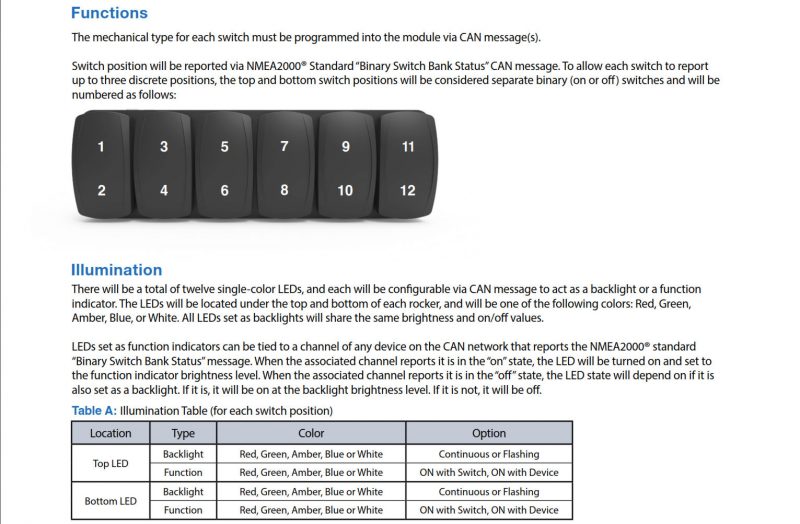

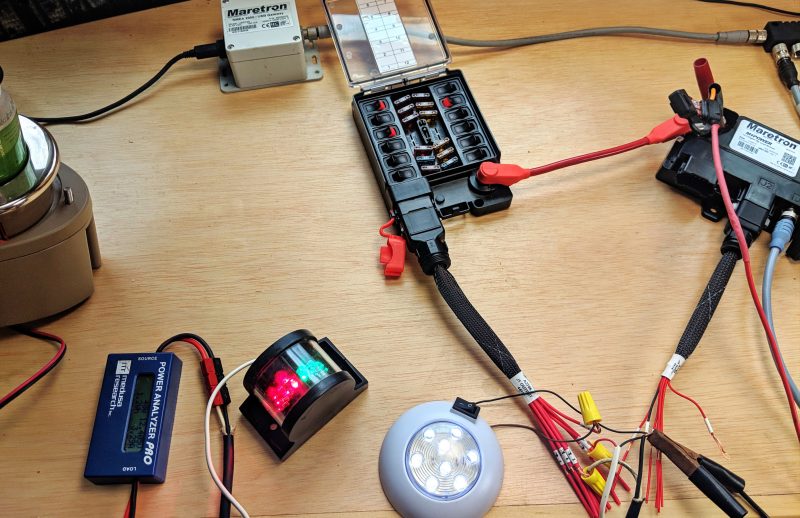

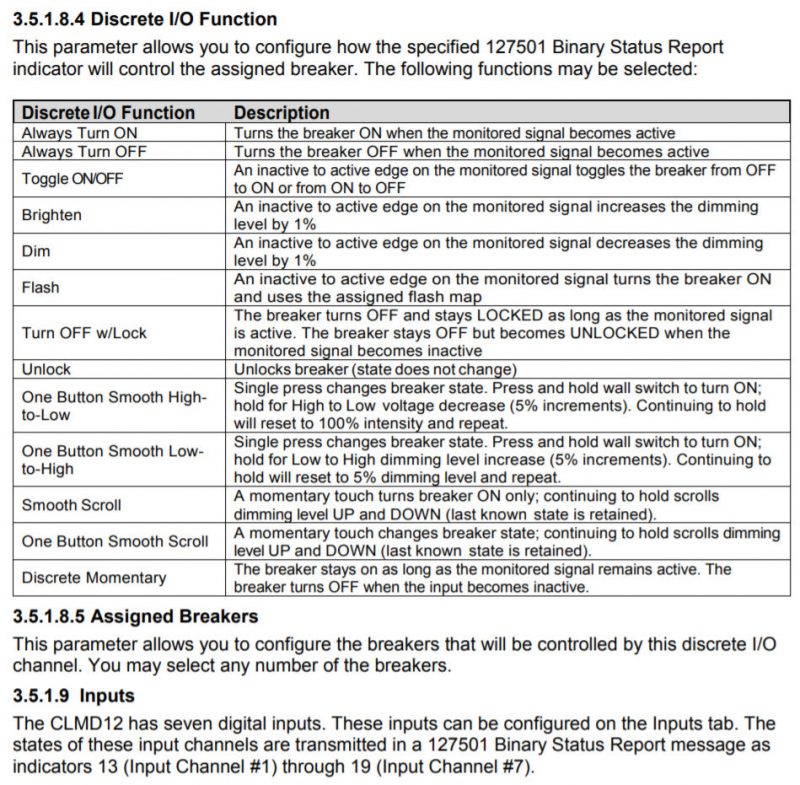
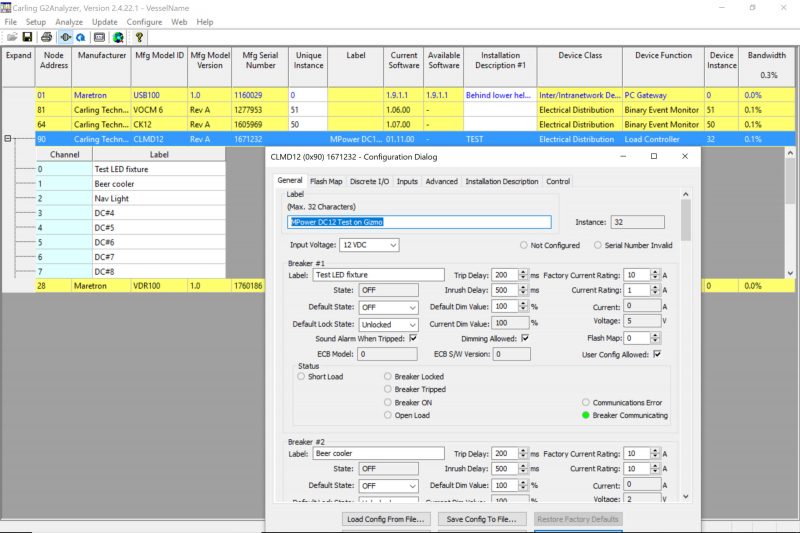

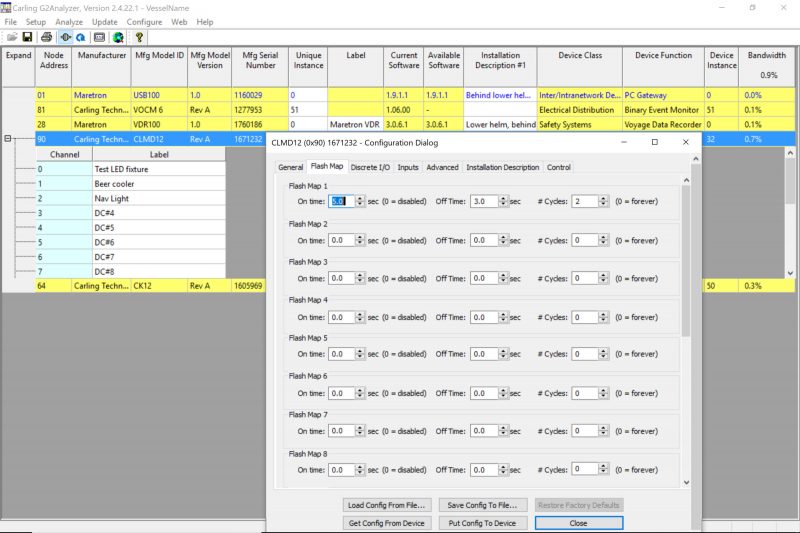
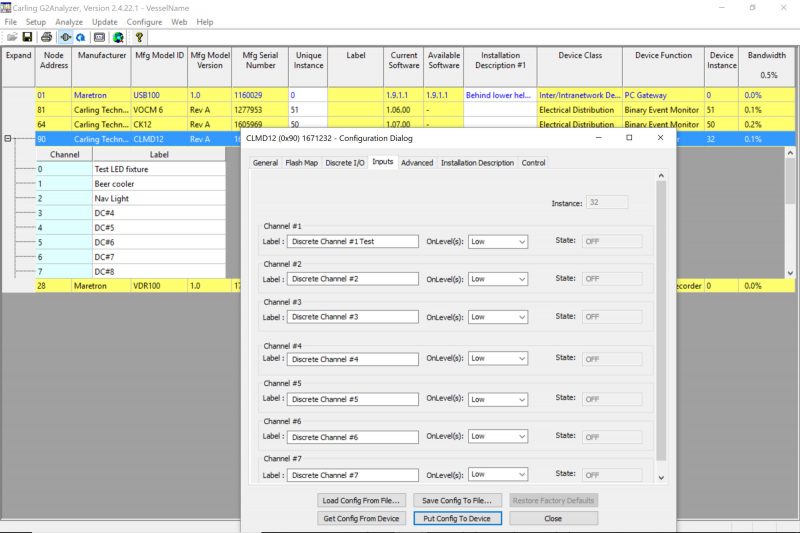
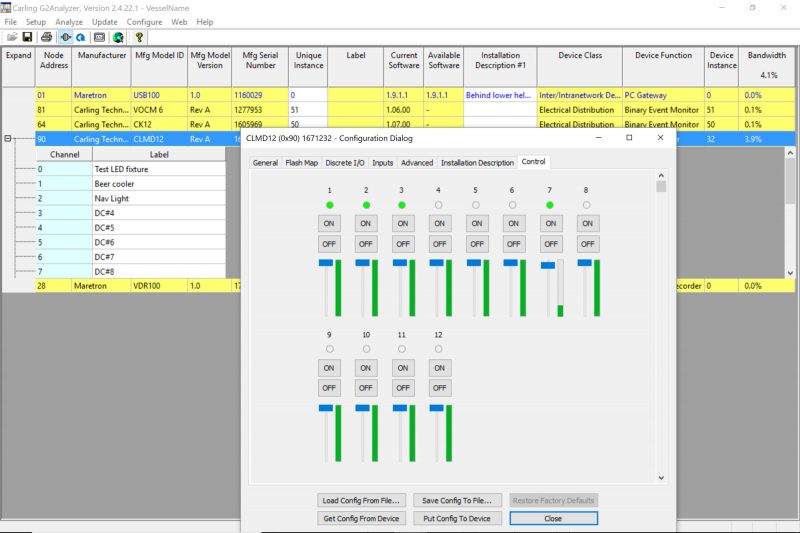

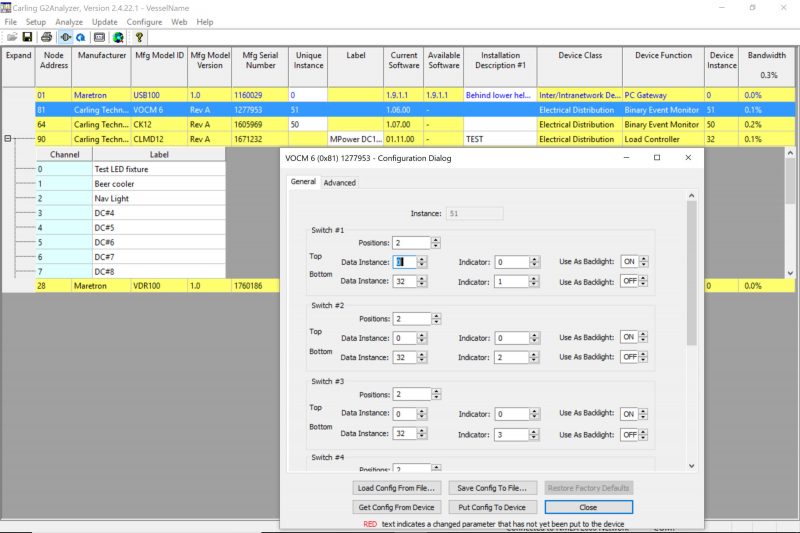
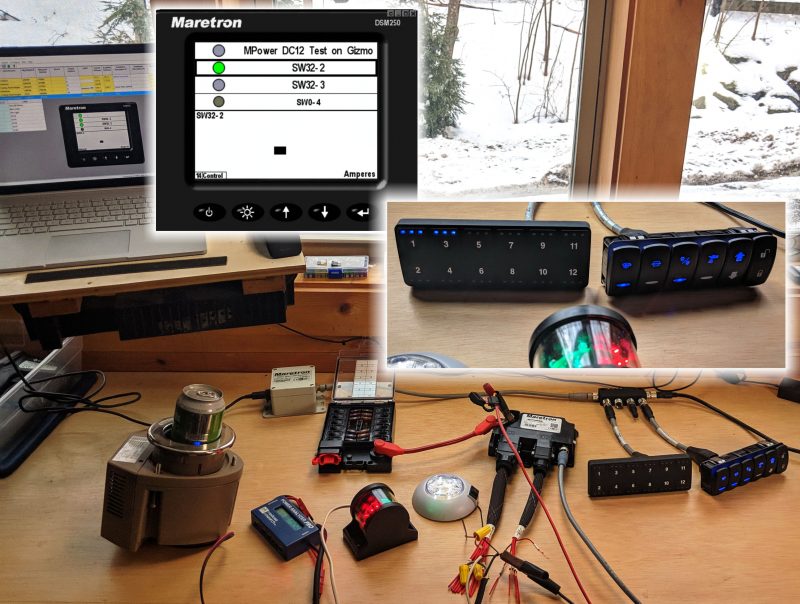
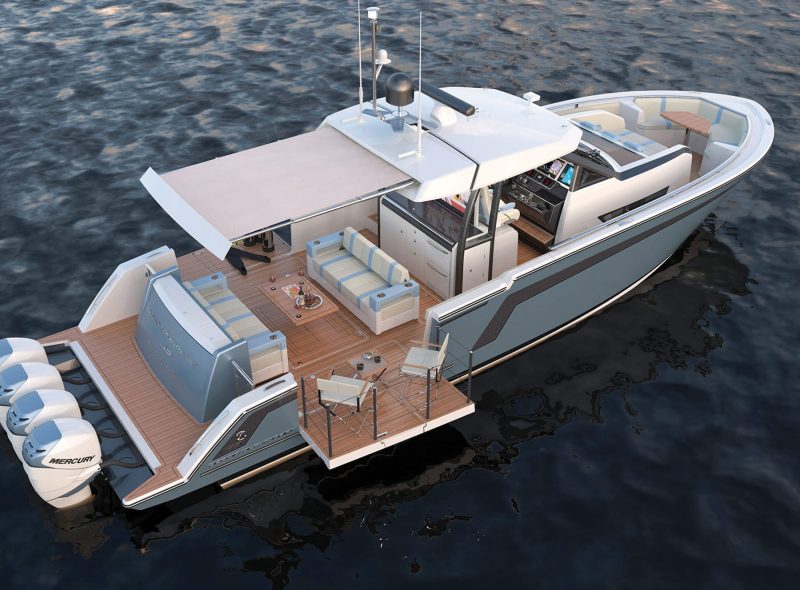
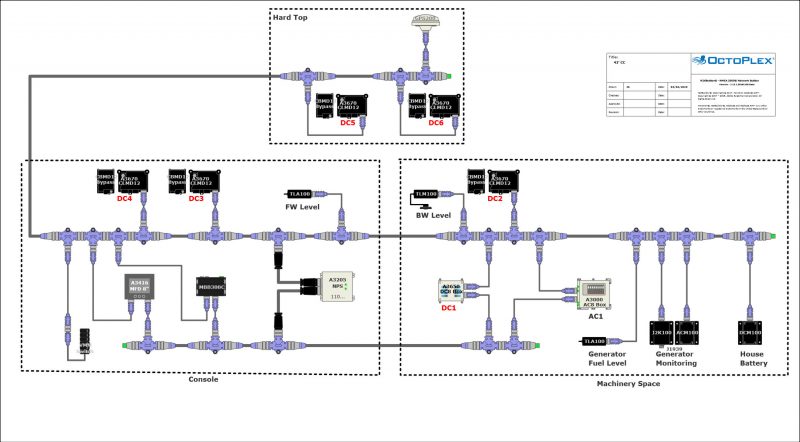
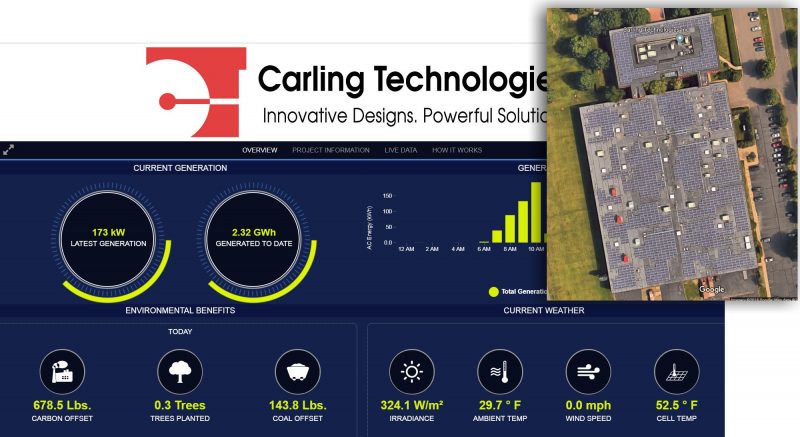
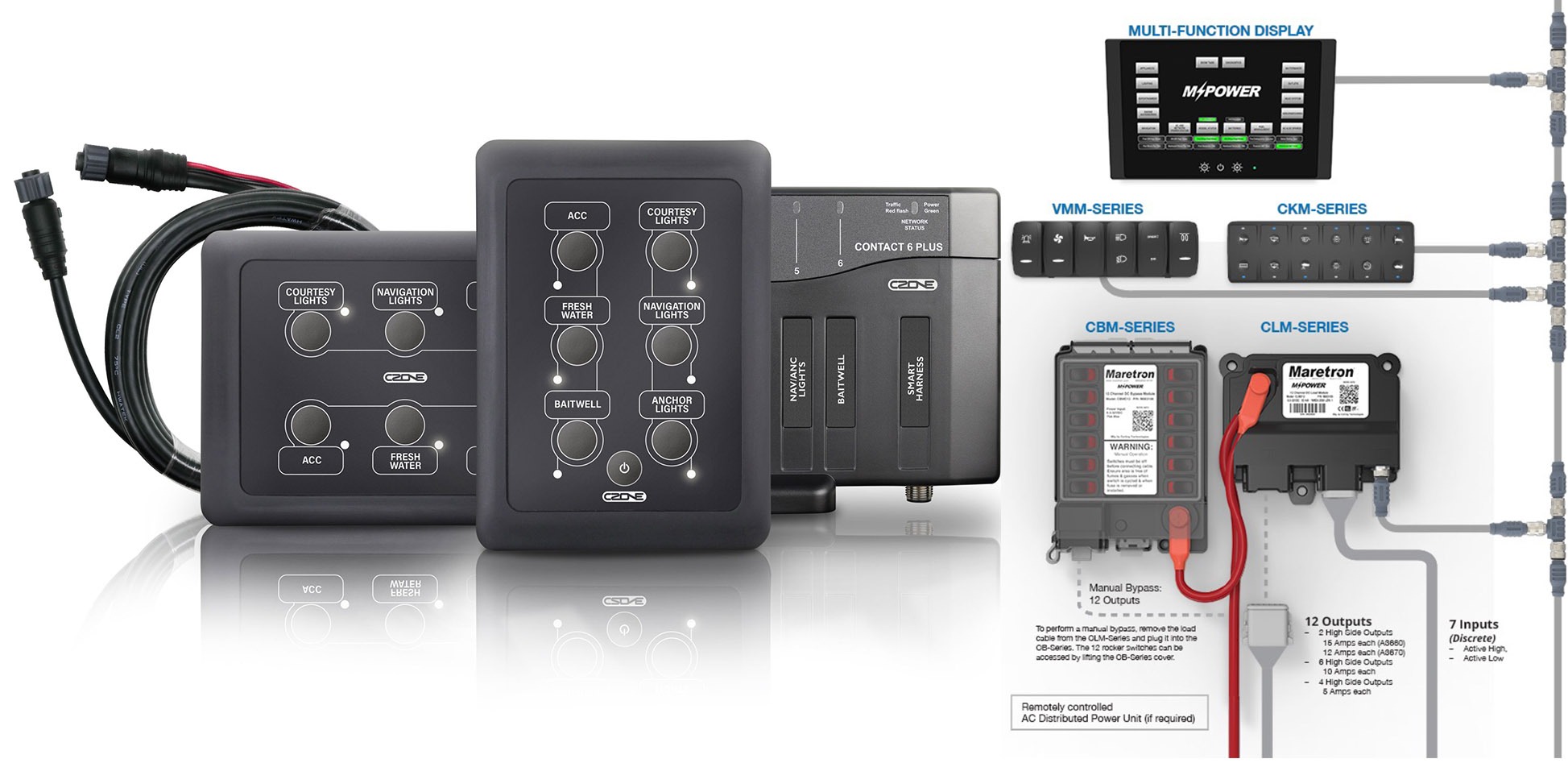










On the Superyacht side, Carling is working with Palladium to upscale Octoplex technology with amazing expected results:
“We’ve done some studies on a 100m yacht and a 140m yacht and we’re seeing upwards of 20 tons of copper cabling being saved and around €2.5 million euros of savings [on the overall build cost]”
http://www.superyachtnews.com/technology/is-titan-a-game-changer-for-electrical-distribution-on-superyachts
http://palladiumtechs.com/titan-smart-electrical-distribution/
Nice article Ben – and great news about the Carling/Maretron merge. Both companies get a lot of respect from me for innovative design and quality construction. The MPower system looks really powerful in terms of configuration, like most Maretron devices. I hope their phone support makes the transition to Jupiter OK – seems it’s almost single-handedly run by Mark Oslund in Phoenix, who usually answers on the first ring!
One of my first thoughts too, Grant, but apparently Mark did not want to move. However, get this: Mark is now working for the NMEA (remotely I guess), so hopefully his expertise and enthusiasm will benefit us in other ways.
Glad to hear that Mark landed in the right job. I had several calls with Mark over the years about various Maretron components (I have about a dozen modules and associated sensors on Fifty Fifty), and always found him knowledgeable and even more enthusiastic about Maretron gear. I called in a few weeks ago with a question on a newly acquired SIM100 modules to watch for water leaks and spoke with Mark’s replacement. Wish I could remember his name but he also had encyclopedic knowledge of the Maretron product line. I think we’re in good hands.
Evan, I suspect that you talked with Ron De Patino, who Mark described to me yesterday as an “an up and coming star with real-world experience”!
Incidentally, Mark’s new title at NMEA is “Communication Standards Coordinator.” All good.
Great article Ben, and the credit to Maretron for their contribution to N2K well deserved.
Those boat builders who have not taken notice should.
I can see, at the much lower entry point cost, how these components including the binary event monitors and a good DIY installation could get me more than halfway to a car like on/off experience for my sailboat, especially helpful when I let my crew go out without me.
Hi Ben,
Thanks for the writeup. I have to say, in regards to your great jest ‘mine (sic:me) is bigger than yours’, I would just slightly rephrase as a family company, employees and all, that ‘ours is bigger than yours’ 🙂 That aside, you are The Man – you founded and built Panbo into a fantastic, totally respected marine blog with absolute integrity, and it’s great to see Ben S coming onboard with his dedication to continue and enhance such a great site. As you mentioned, the marine market may be a relatively small part of our overall business, however, boating is something near and dear to all of our family and we want to do our absolute best to support and enhance products and capabilities in the marine market. Also appreciate in the comment section your mentioning our partnering with Palladium Technologies on their Titan distributed power system – some of the installations currently in proposal stages would involve A/C panels with 8,000 or more circuit breakers, all remotely monitored and controlled – here’s a link to a great video presentation of the system:
https://player.vimeo.com/video/332814573?title=0&byline=0&portrait=0
Have a great summer!
Best, Rick Sorenson